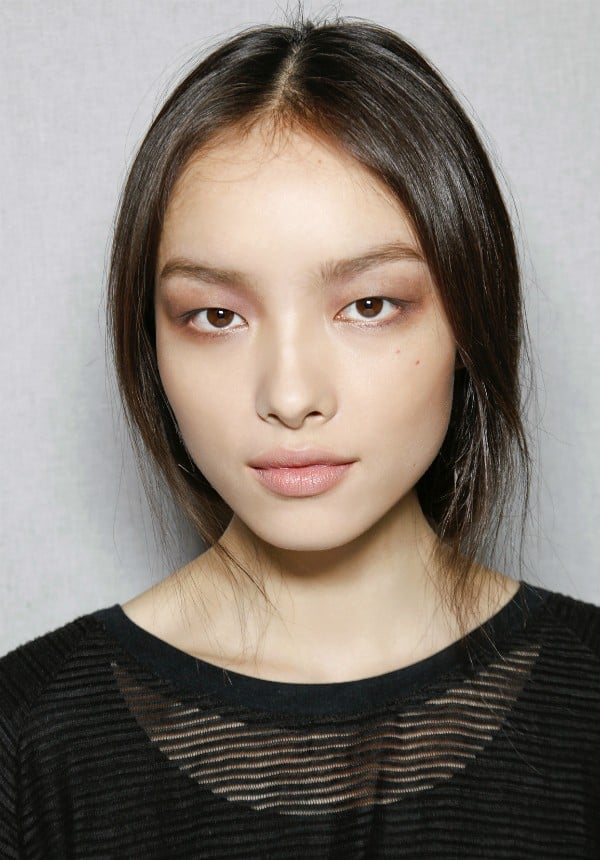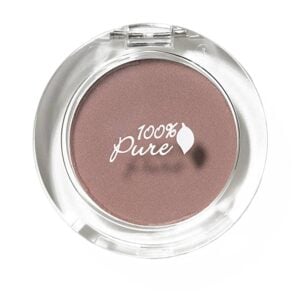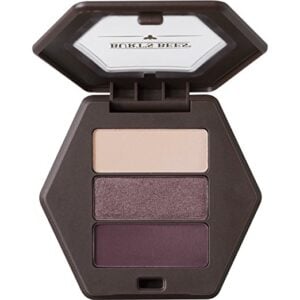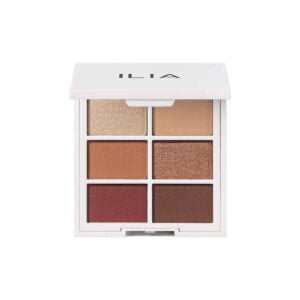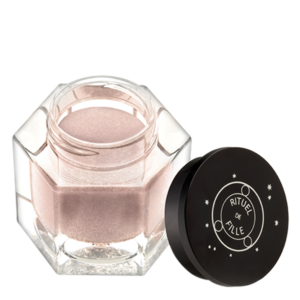It’s not every day that we get all dolled up before leaving our home… because, realistically, who has time for a full face of makeup before 9 am meetings? While most of us don’t make a smoky eye part of our everyday look, our nights out on the town require a little more drama, and that’s when our eyeshadow makes an appearance.
Eyeshadow helps draw attention to what is one of the most mysterious and beautiful parts of our face, but your eyes are also an easy and open gateway directly to your bloodstream. That’s why it’s essential to know what’s going on top, under, and around your eyes. Keeping eyeshadow fresh, texturally consistent, and giving them hues that really pop, is sometimes accomplished using harsh and toxic chemicals.
But it doesn’t have to be that way. Indeed, we’re noticing that the trend toward clean, natural and organic ingredients in skincare is spilling over to the makeup world – and it has been for some time now. That means you have access to an endless number of eyeshadows that don’t contain those harsh and harmful ingredients. We’ve narrowed those endless options down to the top 10 best natural and organic eyeshadows and detailed all of their benefits below.
BEST NATURAL AND ORGANIC EYESHADOW
We’ve compiled a list of the best clean, natural and organic eyeshadows that can easily replace your fave shades with something just as bright and bold without any risk to your body’s health.
 Kosas 10-Second Eye Gel Watercolor Eyeshadow $15
Kosas 10-Second Eye Gel Watercolor Eyeshadow $15
MOB Beauty Cream Clay Eyeshadow $16
Westmant Atelier Eye Pods $85
100% Pure Fruit Pigmented Eyeshadow $20
Winner of multiple prestigious skincare awards, 100% Pure is obviously onto something with their makeup line completely pigmented with fruit-based pigments. Not only are those better for your skin than many traditional shadows (besides the contenders listed here 🙂 ), they’re just as formidable and long-lasting. They also tend to blend better with all the other amazing ingredients in this line of 20 shades of pressed powder, including the vitamin e, avocado butter, and anti-inflammatory rice starch.
Jane Iredale Eyeshadow Kit $59
An eyeshadow kit with five, expertly-picked complementary colors, these shades can be used together or all on their own for a sleek, shimmery shadow that perfects the au-natural look. Tested for sensitivity and formulated without harsh chemical ingredients, Jane Iredale’s eyeshadow kit also has 4 other variants. They all are formulated with all-natural minerals and botanical extracts like Pine Extract that your eyes will love.
If you prefer to purchase your Eye Shadows in the singular, then look no further than Jane Iredale’s extremely popular single pressed powder shadows ($22) that are available in 33 shades! Safety tested for sensitivity just like all Jane Iredale blends, these highly pigmented shadows can be used wet or dry and will help condition and calm irritation with the standout ingredient (aka pine bark).
 RMS Creaseless Eyelets $26
RMS Creaseless Eyelets $26
Created by celebrity make-up artist Rose-Marie Swift, RMS’s nourishing creaseless eyeshadows, are available in 6 shades and are fast on their way to becoming a cult classic. The vegan formula is infused with Green Tea extract and natural Quinoa peptides helping protect the delicate skin health of the eye area. The easily blendable, mixable, and buildable eyeshadows creates a luminous metallic finish that is long-lasting.
Jillian Dempsey Lid Tint $28
This vegan lid tint is free of animal products and byproducts and animal cruelty and full of organic ingredients that are just as nourishing as they are beautifying, including a base of plant and seed oils as well as invigorating botanicals like rosemary and sage. All 10 shades have a sheer but glossy finish that adds just the right amount of color on the days you’re looking for au natural.
Burt’s Bees 100% Natural Eye Shadow Palette $12.99
Burts Bee’s has expanded from their incredible line of lip moisturizing products to include really safe and skin-beneficial beauty and cosmetic products as well. Their eyeshadow pallets are available in four different kits that are all inspired by the colors of different natural settings: Dusky Woods, Countryside Lavender, Blooming Desert, and Shimmering Nudes. Offering all-day wear that won’t smudge or run, these shadows are all 100% natural and made with soothing ingredients like bamboo, honey, and vitamin E.
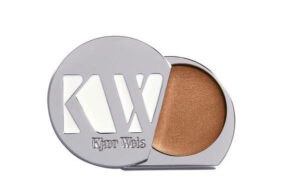 Kjair Weis Cream Eyeshadow $48
Kjair Weis Cream Eyeshadow $48
Not only is Kjair Weis’s luxury cream eyeshadow certified organic but it has no artificial ingredients and is not tested on animals. Available in 4 shades, the formula uses bamboo to replace silicone in order to create a long-lasting finish that blends easily. Other key ingredients include antioxidants like the soothing Honeysuckle extract and Vitamin E.
Gen See Mixed Media Liquid Eyeshadow $25
Ilia Beauty The Necessary Eyeshadow (Warm Nude) $38
In search of a diverse array of eyeshadows? Look to Ilia Beauty’s sought-after 6-pan talc-free eyeshadow palette collection, featuring Warm Nudes ($38) and Cool Nudes ($38) variations. Infused with skin-beneficial ingredients like nourishing jojoba oil, soothing honeysuckle extract, and antioxidant Vitamin E, they offer more than just stunning hues—they care for your skin too.Each palette boasts a range of matte, shimmer, and satin finishes, ensuring versatility for any look. These shadows are not only effortlessly blendable but also richly pigmented, providing intense color payoff.
Ilia enthusiasts will appreciate the brand’s sought-after Powder Tint eyeshadow ($28), featuring a diverse selection of matte and metallic hues to cater to every style.
Ritual De Fille Amber & Ash Eye Soot $38
Eye soot is a first for us, but it’s become quite a fan favorite so we couldn’t leave it off the list. These extremely rich pure pigments are available in 11 shades, from sultry to sweet and everything in between. But what makes this brand really stand out – besides its name – is what they don’t put in their formulas. They only use what’s necessary and they handcraft each concoction with intentionality. Meaning the natural oils, waxes, and pigments used all play a necessary role in the creation of intense and smoldering shades.
WHY GO ORGANIC AND NATURAL WITH YOUR EYESHADOW?
Potentially harmful ingredients can be found in most traditional skincare and makeup products. That’s because regulation over this industry is sorely lacking and big brands have long opted to put their profit margins over your health and wellbeing.
But with a larger segment of consumers demanding better quality products that take into consideration their health, more and more brands are leaving the chemicals and synthetics out of their formulas and replacing them with earth-derived ingredients.
If you’re not sure how to tell the difference between the good, the bad, and the ugly, consult this checklist. We go through all the ingredients you never want in your eyeshadow formula and why.
PARABENS
It’s becoming pretty common to find “paraben-free” labels on all sorts of makeup and cosmetic products because the dangers of this widely used preservative are well known. Parabens are used to prevent the growth of bacteria, mold, and yeast in your eyeshadow, but it’s known to mimic estrogen and cause reproductive problems. Traces of parabens have been found in breast cancer tissue samples and, at the very least, can cause skin irritations and contact dermatitis.
PHTHALATES
Another very common chemical present in many of our everyday cosmetics, phthalates are a group of chemicals that help your makeup hold color. Eyeshadow is one of those items that’s made to bring bright and bold hues to your face, so it’s a major culprit of having phthalates in its formula. These chemicals are endocrine disruptors that have been linked to an increased risk of breast cancer as well as reproductive and developmental issues. You may not notice phthalates listed on your ingredient list because they are often disguised under “fragrances”, so look for labels that say “phthalate-free”.
BUTYLATED COMPOUNDS (BHT AND BHA)
Another chemical used to make your makeup last longer than it otherwise should, BHT and BHA are known to cause skin allergies. What’s worse, they are endocrine disruptors that have also been linked to organ, developmental, and reproductive toxicity. Banned in the EU because of this evidence, they are also bio-accumulative – meaning your body can’t get rid of them and they accumulate over time, which can lead to serious health consequences.
SYNTHETIC COLORS
In order to create the various bright, shimmery or metallic hues we wear on our eyes, colors are synthetically made. The synthetic colors used to create the shades of our eyeshadows are derived from petroleum and coal tar sources. These chemicals are suspected human carcinogens that are toxic to your body and, because of the way petroleum and coal are extracted, they’re ultimately bad for the environment too. Look for anything in your ingredients list that’s labeled FD&C or D&C preceded by a color and a number (i.e. D&C Red 27 or FD&C Blue 1).
TALC
Talc is often used in eyeshadows to create a frost or metallic hue. Talc is generally recognized to be safe by the FDA, but the potential for asbestos contamination is too high for us to ignore (as are the growing lawsuits that link talc to ovarian cancer).
ETHANOLAMINE COMPOUNDS
While these chemicals aren’t necessarily harmful on their own, they are often contaminated with nitrosamines, which are human carcinogens. Ethanolamine likely won’t show up on your ingredients list, so look for ingredients containing the letters DEA, TEA, and MEA.
ALUMINUM POWDER
The only cosmetic you’ll find this in? You got it! Eyeshadow. Used to give eyeshadow its various hues, it’s a neurotoxin that’s also been linked to organ toxicity. Look for (and avoid): aluminum, LB Pigment 5, or pigment metal.
HEAVY METALS
If you’re partial to greens and metallics, you might be especially prone to exposure to heavy metals in your eyeshadow (although it can be found in all types of makeup). Like the aluminum powder, heavy metals are neurotoxins that can cause brain damage. Other heavy metals, like Nickle, have been associated with lung cancer and respiratory damage. Nearly 20% of women have an allergy to Nickle and this can cause dry, itchy eyelids, redness as well as blisters.
Curious to learn more? Be sure to explore our in-depth guide on all things natural and organic eye-makeup.
A NOTE ABOUT NATURAL VERSUS ORGANIC
There’s something you need to know if you’re joining the clean makeup and skincare movement – and that is: there’s a difference between natural and organic. Below, we explain what you need to know.
NATURAL
Let’s begin with the term “natural.” Natural is not a regulated term. That means that any brand can slap on the labels “natural”, “naturally sourced”, “derived from nature” and the like, without actually having a clean formula.
You have to use your discernment when it comes to buying products that are labeled “natural”. Some natural makeup will be formulated with tons of great, truly natural, and skin-beneficial ingredients, while some may use the label in a misleading way and only contain a few earth-derived ingredients.
Always read your ingredient labels and know what you’re spending your money on. If in doubt, check it out! Research the ingredients online using the EPA’s ingredient database or call manufacturers for clarity.
Another thing to note about the term natural is that there are plenty of natural ingredients out there that aren’t actually safe. Talc is a perfect example of this. Talc is a mineral, so it’s technically natural, right? But where talc is mined, asbestos is often nearby. When talc becomes contaminated with asbestos, it’s no longer good for you. In fact, it’s downright dangerous. Silicone is similar. Silicone is derived from silica, which is a component of sand. So, one could technically claim that silicone is naturally derived. But silicone is a controversial ingredient that’s often no good for sensitive skin types, at the very least.
ORGANIC
Organic, on the other hand, is a regulated term. In order to use the USDA-certified organic seal, a brand must adhere to some pretty strict standards. The USDA has set out several different levels of organic, and you might find any one of these on your label:
- “100% organic” means the product contains only organically produced ingredients (i.e., ingredients that have been grown without the use of pesticides, synthetic fertilizers, or other harmful chemicals and the final product doesn’t contain any synthetic additives or preservatives).
- “Organic” means the product contains at least 95% organically produced ingredients.
- “Made with organic ingredients” means the product contains at least 70% organic ingredients.
Anything made with less than 70% organic ingredients cannot use the term “organic” anywhere on the label. Essentially this means that you can trust that skincare and makeup labeled “organic” are what they say they are.
There are a few other organic labels that skincare and makeup manufacturers might use to signify that they use good ingredients and make clean products:
- ECOCERT is a Europe-based organic certification organization. This label indicates that a product is at least 95% of natural origin and made up of at least 95% plant ingredients that are certified organic.
- COSMOS is also EU-based and, in order to use this label, a product must contain a minimum of 20% organic ingredients and 95% of the physically processed agricultural ingredients must be organic. The label should list the percentage content of ingredients of natural origin as well, so you can determine how clean it is.
- NATRUE is used for natural, derived natural, or nature-identical ingredients. They prohibit the use of GMOs, and they also have an organic label that can only be used on products that are at least 95% plant and animal-derived. That organic label also indicates that the derived natural substances came from controlled organic farming and/or wild collection.
Looking for and understanding these labels is going to be a key component of going clean with your skincare and cosmetics. So keep them in mind while you’re shopping.
FINAL THOUGHTS
With all the harmful and toxic ingredients found in our eyeshadows, it can be overwhelming trying to find the colors we want in a product that takes our health and safety into account. But as the world becomes more woke, there are more and more cosmetics out there that do just that. Using natural and organic ingredients that protect and nourish your skin while providing a variety of hues with botanicals and flower extracts, you can have the best of both worlds.
